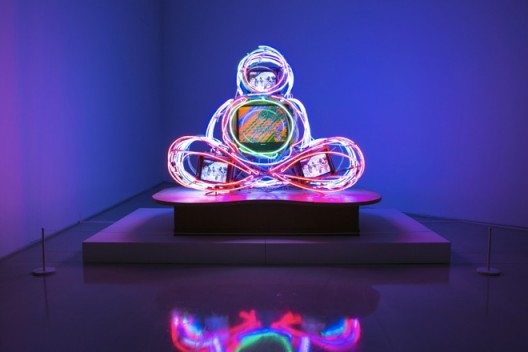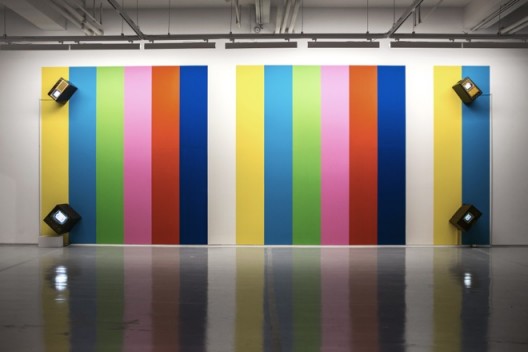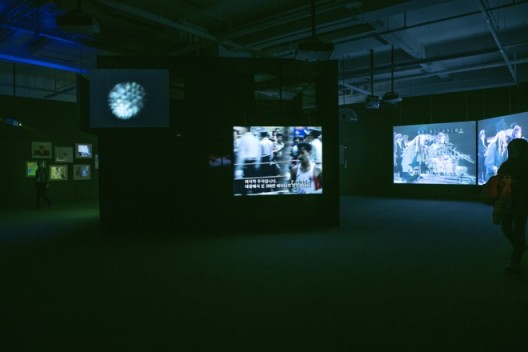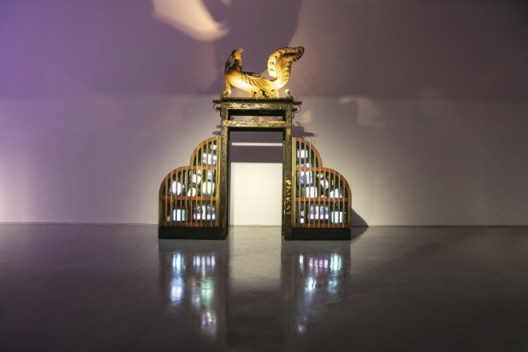Lettres du Voyant: Joseph Beuys × Nam June Paik
HOW Art Museum (No 1, Lane 2277, Zuchongzhi Road, Shanghai, China), Jan 20–May 13, 2018
What makes exhibitions relevant?!—There can be many reasons of course, but most important is that the exhibition strikes a chord with the audience. Like a musician playing an instrument, an exhibition can excite an audience transforming them into an orchestra of participants. That was the nature of Fluxus. Two of the art movement’s most important advocates can now be experienced—“seen” would not be the appropriate term—at the How Art Museum in Shanghai.
There are some remarkable circumstances which surround this exhibition. Firstly, originally scheduled to be the inaugural exhibition for the museum last April, the show had to be postponed, because of the Chinese government’s stance on Korea due to the THAAD missile defense shield. Of course, we don’t need to mention that Paik was a nationalized US-Citizen, who had received his education and started his career in West Germany. Now that the artworks by Nam June Paik are sanctioned again, secondly the work of Joseph Beuys in all its super-charged social engagement begins to dazzle anew in the light of the current development of China’s “New Era”, shedding light on a historical period in the (West) Germany of the 1970s and 80s. Thirdly and also very remarkably, all the works on display by Joseph Beuys are part of the private collection of Zheng Hao, the museum’s founder, who acquired the 400+ strong collection from the German collector Michael Berger (who so happens to be the father of a prominent curator based in Hong Kong), making it the biggest and most profound collection of Joseph Beuys in Asia.
The exhibition with the poetic and prophetic title: “Lettres du Voyant: Joseph Beuys and Nam June Paik” has been curated in three parts by Gregor Jansen, from Düsseldorf (Joseph Beuys’s city) and Kim Nam Soo. The first part on the museum’s ground floor features some of the most beautiful video sculptures in Paik’s oeuvre including a few that are direct results of Paik’s long-term collaboration with Charlotte Moorman in New York, some of them direct homages to John Cage and also Joseph Beuys.
Paik, who was the youngest of five children from a family in the steel and textile businesses, had gone to Germany in 1956 to continue his studies in musicology and composition. From 1958 to 1963, he was working in the “Studio for Electronic Music” at WDR (West German Radio) with the famous German composer Karlheinz Stockhausen, eventually developing the concept of “action music” (which involved the eventual destruction of musical instruments as part of the performance).
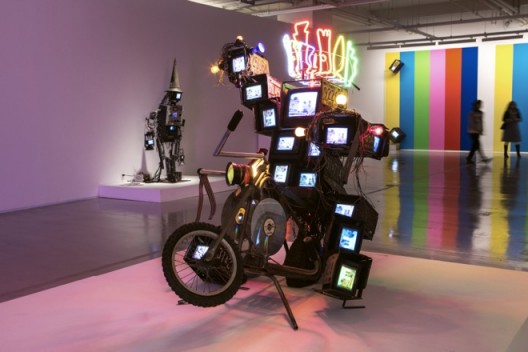
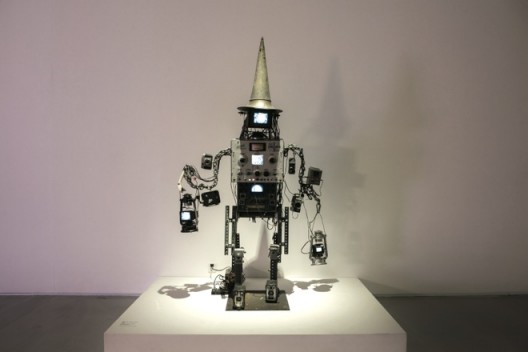
On June 5, 1965 Galerie Parnass in Wuppertal, Germany hosted the last big FLUXUS event in Germany that brought together the movement’s most significant artists for a 24-hour performance where Nam June Paik famously declared: “All our lives TV has been attacking us, now we are striking back.” All night he was performing music by John Cage, Morton Feldman, La Monte Young and Beethoven and in the morning he deployed his life-size female-featured robot “K-456” to Wuppertal’s Moltkestrasse for his first “Robot Opera”. The automaton could move, speak, shake its head and even “defecate” by spilling beans onto the streets. “K-456” in many ways was the precursor to a lot of Paik’s later video sculptures.
Joseph Beuys was also performing that night. Sitting on a small wooden box, he had his “staple” of performing objects with him that he interacted with continuously for the entire duration of the 24 hours: a record player, tape recorder, loudspeaker, an alarm clock, a zinc box, a fat cone, some felt, and two stopwatches. Eventually, he was reaching for an object of his own invention, a “mutual spade” (Gemeinschaftsspaten)—a spade furnished with two handles, which could be used by two people simultaneously … In the audience most likely was Michael Berger, who like Paik at the time, lived in Wuppertal; they were friends with each other—Fluxus was very much about community.
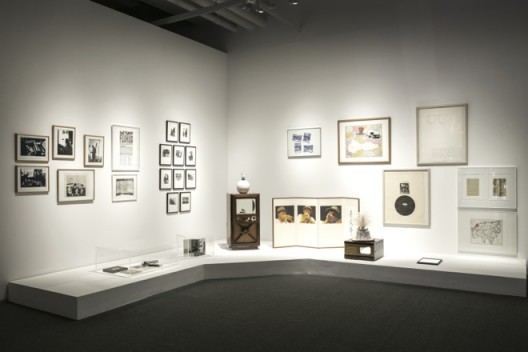
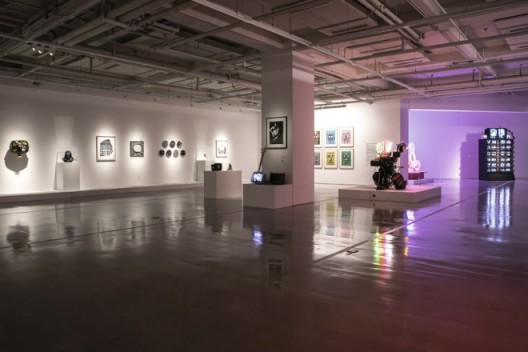
The second part of the exhibition focuses on the two artists’ life-long collaboration after they first met in 1962 in Cologne. At the center of this section is both artists’ joint concert at the Seibu Museum in Tokyo in 1984. For both artists, it was sort of a culmination point of their 20-year-long collaboration. What drove them together was definitely spiritual. Paik was a Buddhist and Beuys a self-made syncretic, whose artistic powers always flowed from deep missionary aspirations on behalf of a “religion” (just to use a larger term for any kind of belief system) of his own making. Particularly Beuys’ concept of “Eurasia”—a combination of Europe and Asia—had been essential for the long-term engagement of these artists with one another. As part of his spiritual, social, political and artistic thinking the fusion or reconciliation of Europe and Asia fulfilled a deep existential need of Beuys; to heal and lead not only himself, but all of humankind. Already in 1963, he formed a political party under the name EURASIA — years before he would get involved in the newly-founded Green Party in Germany where he became their candidate for the European Parliament.
The third part of the exhibition allows a very detailed view into all of Beuys’ activities and thought. The collection of the How Art Museum is focused on multiples: objects, leaflets, documents, statements, manifestos, photographs and remains from performances—in other words, the collection is focused on the public Beuys. He was so prolific an artist, that besides the constant stream of activities that are on display at the How Museum, he was also an accomplished sculptor and an observant draftsman. One could argue that within himself he harbored at least three different artist personae.
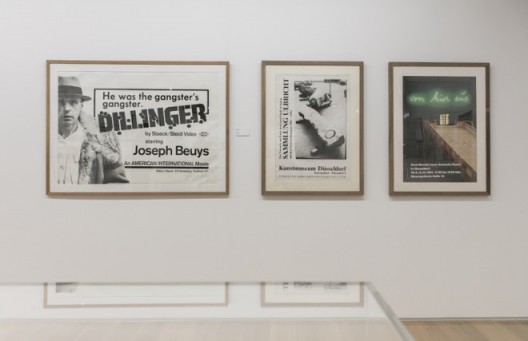
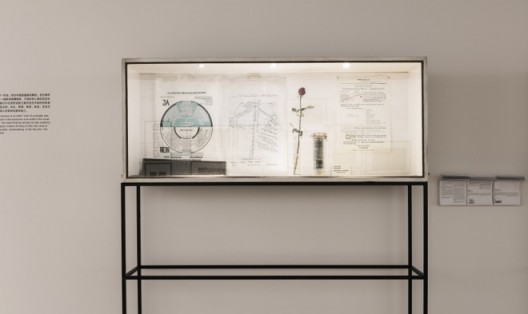
Sculpture, of course, was one of his key interests and one of his accomplishments was to redefine the term. “Social Sculpture” — the German term Beuys used, was “Soziale Plastik”, adding a sense of plasticity and hence a focus on the transformational aspect of sculpture to the term — was geared towards applying artistic knowledge and strategies towards reshaping society by means of artistic intervention into everyday life, which was a revolutionary idea by 1960s and 70s standards. Closely linked to another important term that Beuys coined “Erweiterer Kunstbegriff” or “Expanded Conception of Art”; it was the time when artists took to the streets to challenge the people’s aesthetic, social and political preconceptions. One famous example “7000 Eichen—Stadtverwaldung statt Stadtverwaltung” was Beuys contribution to documenta 7 in 1982. He dumped 7,000 basalt stones in front of the Fridericianum, with the pledge to plant 7,000 trees in the upcoming years, each accompanied by one of those stones; it was the time when Germany, like China today, was heavily polluted by its own industries. As a result, the German forests were dying, causing a high level of anxiety which eventually led to the formation of the Green Party. These efforts that have paid off and provided Germany with the political dividend of being one of the most ecologically sensitive nations in the world today.
Beuys was interested in dividends and more importantly in “Kapital” — “capital”, economic cycles, advocating some sort of, as he called it, “spiritual capital” which needs to be exhausted. To that end he worked himself to exhaustion, transforming “spiritual capital” into art and by his own definition into “social sculpture”. He did that in an exemplary way, putting himself into a position, one which he expected everybody else to assume. “Jeder Mensch ein Künstler” — “every (wo-)man (is) an artist” (for lack of a more appropriate translation) — entrusting everybody and their creative energies. The rallying cry of the day was to release the people’s energies from the orthodoxy and oppression still very much felt in Germany in the aftermath of the fascist past.
The presentation of Beuys’ works is elegantly divided up into different sections introducing the viewer to the different aspects of Beuys’ philosophy with ample examples. Anybody who wishes to study this historical period of Germany through art and politics will find rich examples with just enough guidance to be able to enter some of the most arcane discussions of that time. There is much to be learned from this flashback and plenty of inspiration for an art engaged with creating a more social society.
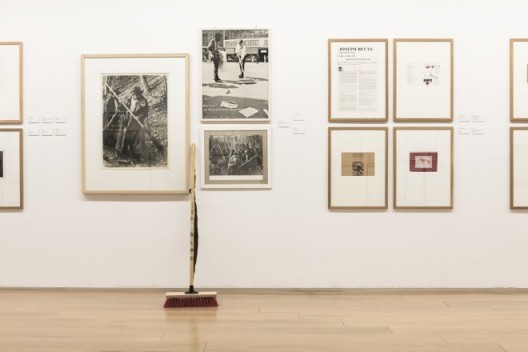
Participation, as mentioned before, was the call of the hour—a spirit that is not only present in the collection, but also the presentation. There are some objects in the show that are—what would we call it—dithering, loitering. There is a broom leaning against one wall. Brooms are prevalent throughout Beuys’ oeuvre, as a “symbol”, or more precisely symbolic and functional tool to metaphorically clean, or cleanse, a particular social, political, artistic context in a concrete location. Obviously that could be a subject for a longer essay in itself. But to cut it short: the broom in question is comprised of a broomstick, which has been furnished with medallions, that traditionally were collected by recreational hikers in the German-speaking countries, to be put on their walking sticks as proof of their sojourns. However, additionally, the broom had been enhanced at one time with a leather strap for easy hiking: just throw the broom over your shoulders and go! However, the actual broom bristles seemed to be of much more recent provenance, raising doubt about the originality of the piece. The broom does not feel “Beuys”.
There are two more incidents in the exhibition where similar concerns could be raised (I will leave it to the audience to figure it out) — but then again why bother? Fluxus was all about sharing and participating. Some additions might have been made by the previous owner, some by whoever installed the show . . . Though the methodology might not be in line with conventional theories of conservation, it is certainly in line with the spirit of Fluxus! That, we cannot begrudge them.
